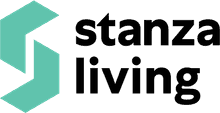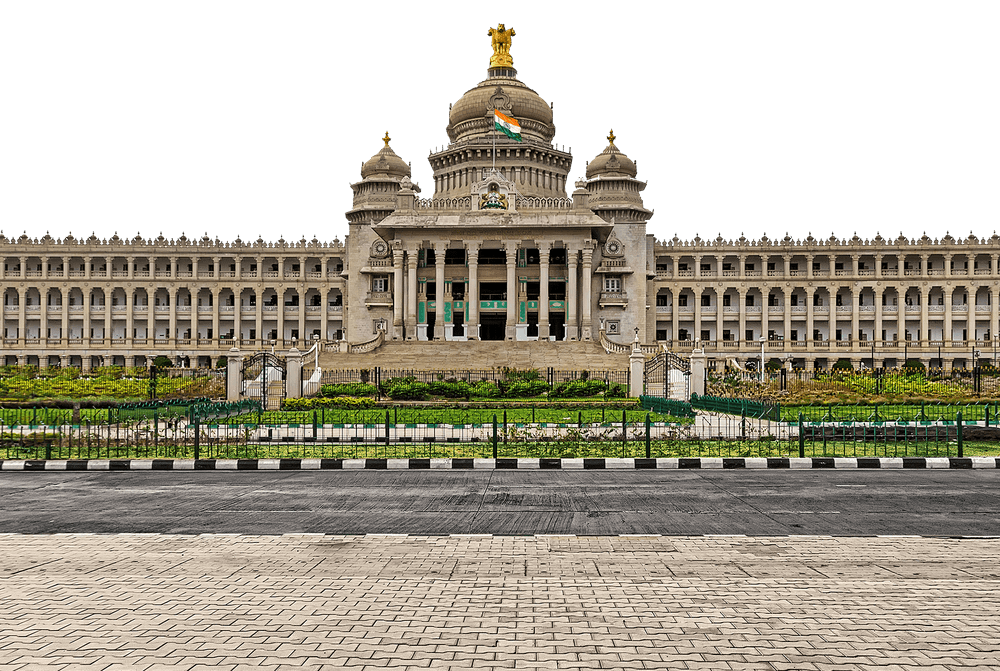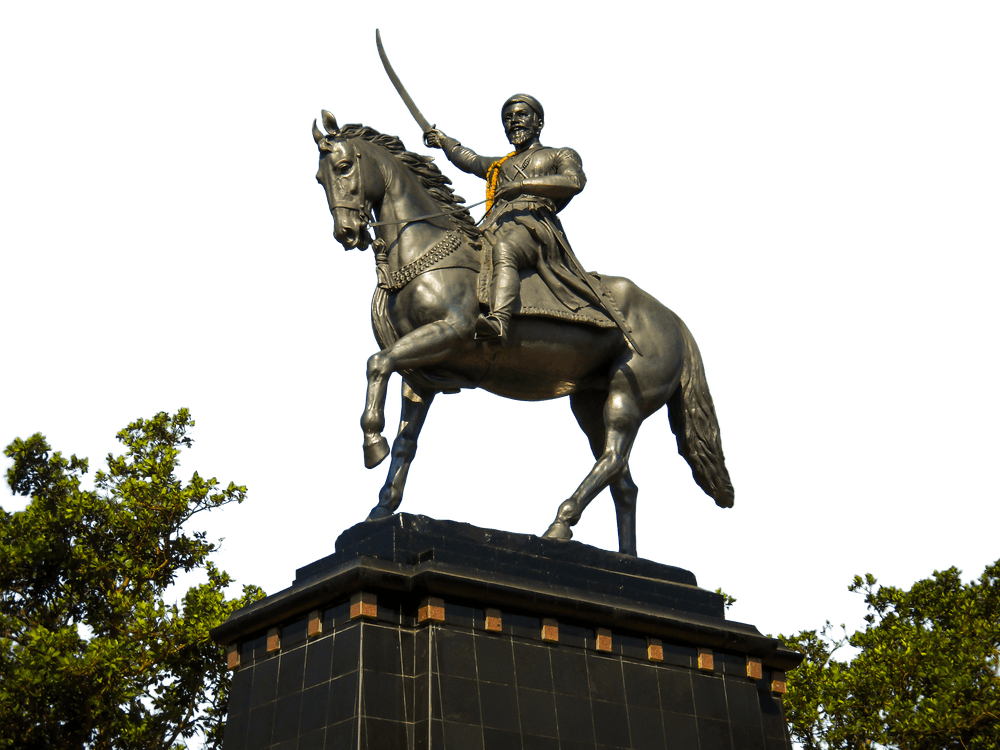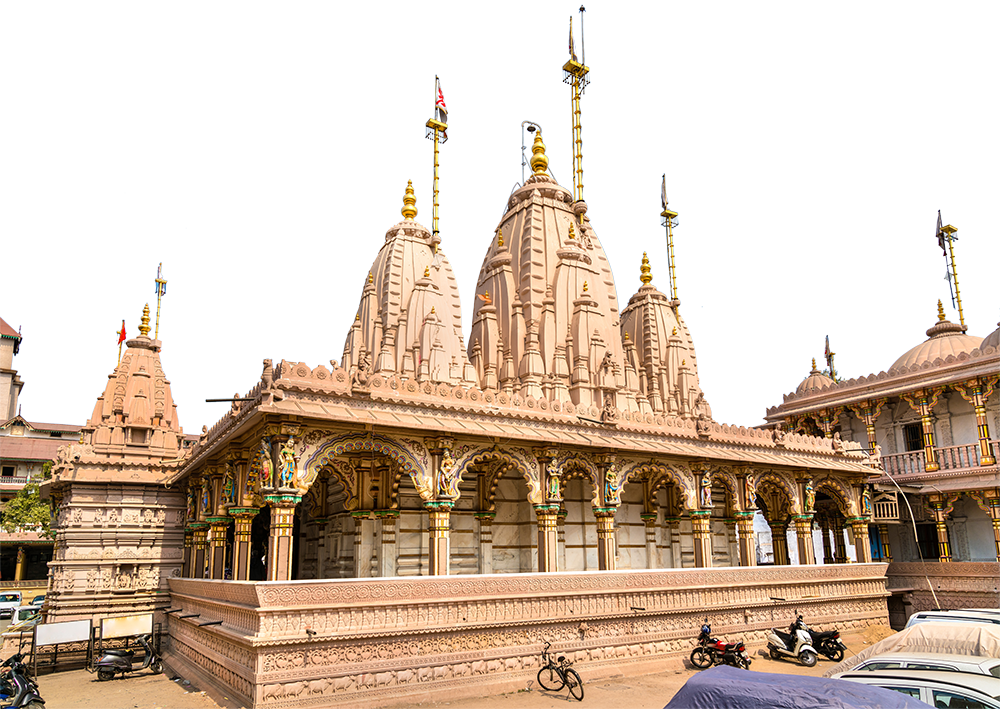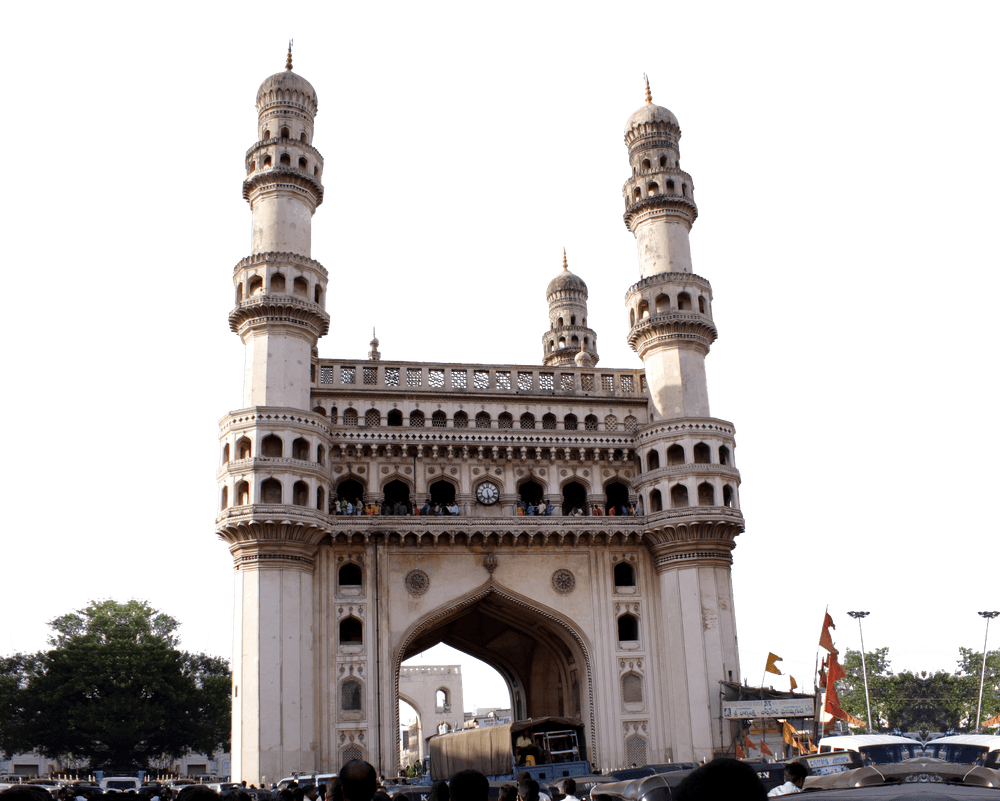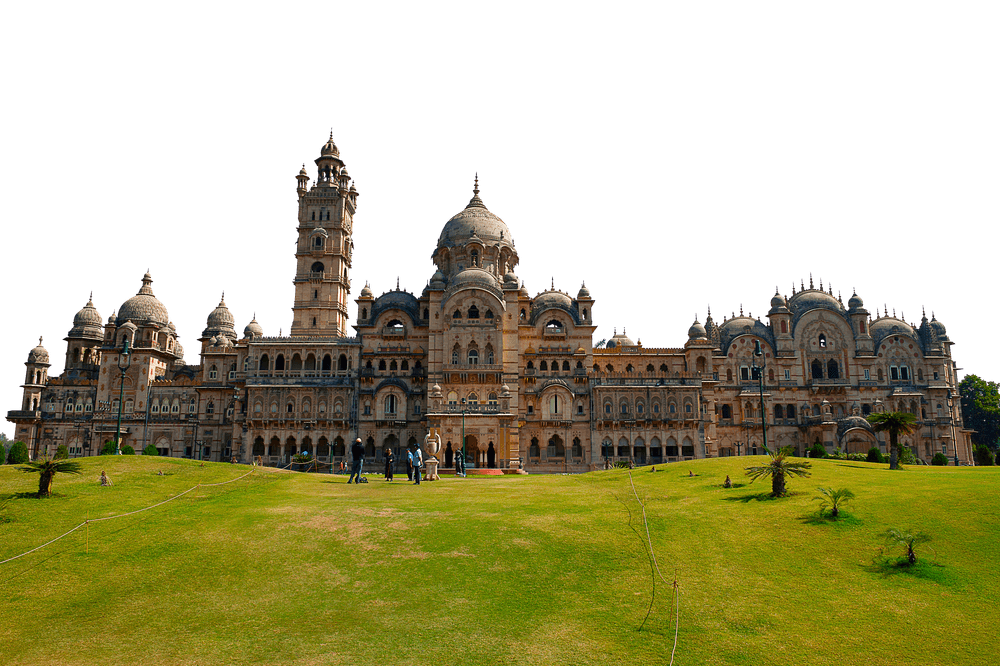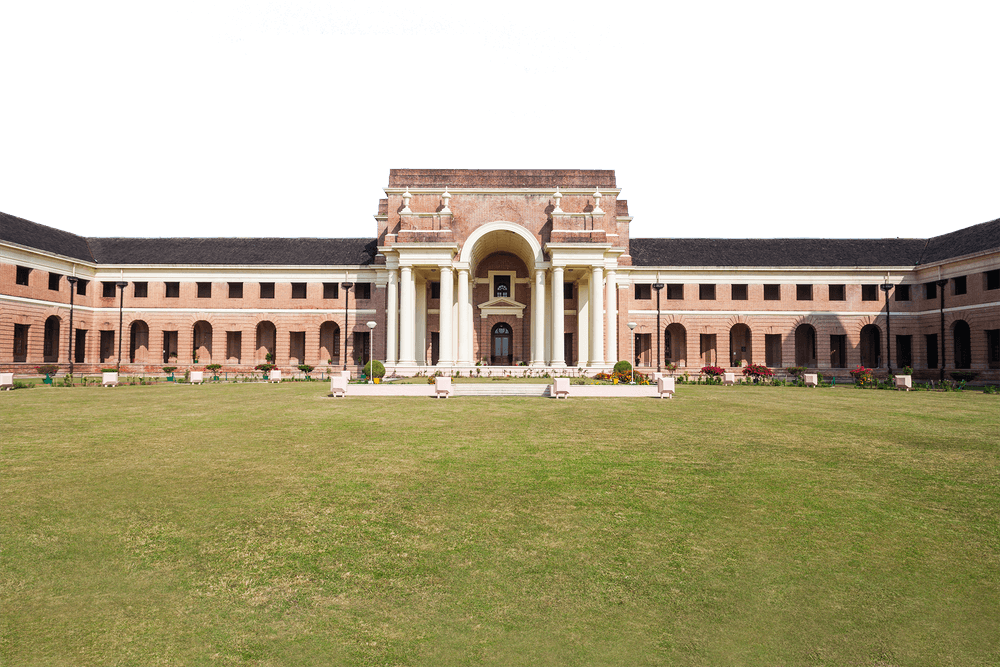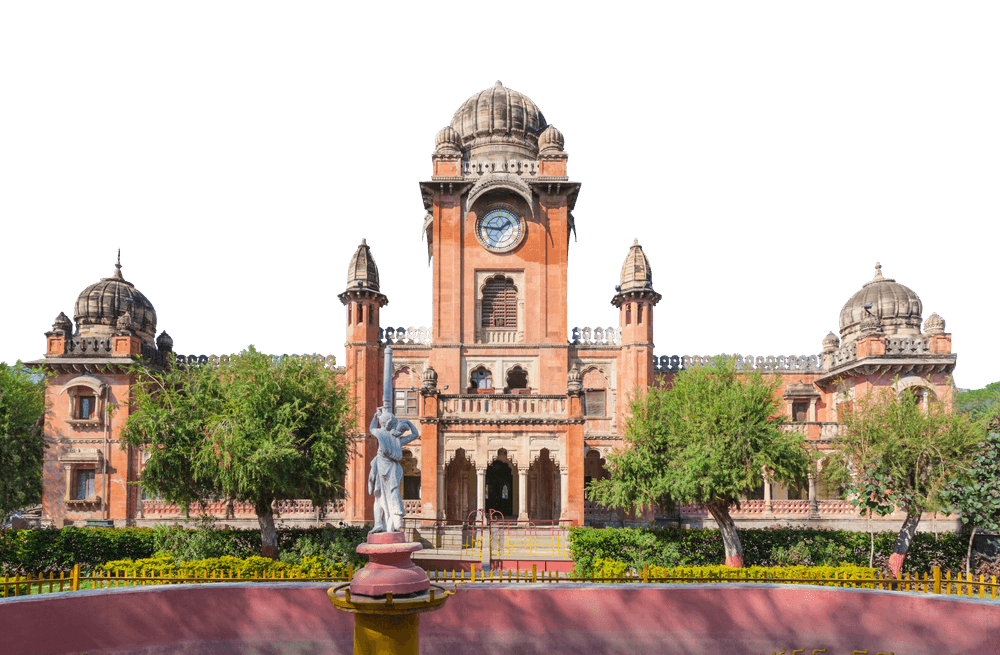
25 Kannada Words To Kickstart Your Life In Bangalore

Stepping into Bangalore, a vibrant and fast-paced city, you quickly realise that English, Hindi, and “Kanglish” will help you a lot. But knowing some basic Kannada words is more than just helpful; it opens up deeper connections, shows respect, and makes everyday life easier. When you greet someone, ask a question, or order food using a few Kannada words, it shows you care enough to make an effort. Locals often respond kindly and sometimes even more warmly than if you only speak English.
For newcomers, learning Kannada words for beginners builds confidence in markets, transport, social settings, and small interactions that create rapport.
In this blog, we will go through essential Kannada for various real-life situations, including greetings, travel phrases, food vocabulary, pronunciation tips, and daily practice advice. You will also see beginner Kannada letters with words included to help with reading and sound patterns.
Learn Kannada for Daily Conversations – Essential Words & Sentences
Here are some basic words and phrases for learning Kannada that you should keep handy. Use them frequently, as repetition is important. These are regular words you’ll use in Bangalore’s markets, buses, shops, cafés, and more.
Namaskara – Hello / Greetings
Hegiddira? / Hegideera? – How are you?
Chennagiddini / Chennagideera? – I’m fine
Dhanyavadagalu – Thank you
Dayavittu – Please
Kshamisi – Sorry / Excuse me
Illa – No
Haudu – Yes
Neeru – Water
Oota – Food / Meal
Beku – Want / Need
Illi – Here
Alli – There
EshTu? / Eshtu? – How much?
Ninna hesaru yenu? / Nimma hesaru yenu? – What is your name?
Nanna hesaru – My name is …
Nanage gothilla – I don’t know
Cultural Etiquette in Kannada Conversations
A few cultural notes will help you use these phrases more naturally:
- Respect matters. When speaking with older people or in formal settings, use “Nimma” instead of “Ninna” (your). Using respectful forms changes how people see you.
- Tone and humility matter. A simple “Dayavittu” or “Kshamisi” softens a question.
- Use plural and respectful forms. For example, “Hegiddira?” is a respectful way to say “How are you?” When talking with friends, you might hear “Hegidheera?” (informal).
- Be careful when mixing English (Kanglish). Many locals combine Kannada and English (eg, “car-u” or “office-u”). That works in casual settings, but using pure Kannada phrases earns you respect.
- Smile, and try even if it’s not perfect. People will appreciate your effort, even if your pronunciation isn’t exact.
Kannada Phrases for Travellers – Essential Expressions for Your Stay
When you’re out and about exploring Bangalore, these phrases will help you manage check-ins, directions, and necessities.
Idhu elli ide? – Where is this?
Bus stand elli? – Where is the bus stand?
Auto yelli barutte? – Where does the auto go?
Do you speak English? – Neevu English mathanadteera?
Please speak slowly. – Salpa mellage maatadi / Salpa nidhanaagi maatadi
Repeat, please. – Innome hel (innome helu)
Common Phrases for Shopping & Bargaining in Kannada
Shopping in local markets is an art. These phrases can help you bargain politely:
Idara bele eshtu? – What is the price of this?
Sole paDeyabeku / Sole maadi – Reduce it a little, please
Jaasti beku – I want more (quantity)
Naanu thagoli – Please give me (that item)
Idu chennagide – This is good / looks good
Health and Emergency Phrases in Kannada
In an emergency or health situation, being able to communicate basic needs is very important:
Nanage arogya samasya ide / Nanage aswasthya ide – I have a health problem / I’m unwell
Doctor yelli? – Where is the doctor?
Dayavittu madat maadi – Please help me
Nanage sahaya beku – I need help
Police hel / Police baa – Call police
Kannada Greetings and Responses – Everyday Expressions
Getting greetings right helps create a positive first impression. Here are common greetings and responses you will use daily around Bangalore.
Shubhodaya – Good morning
Shubha madhyahna / Shubha madhyāhna – Good afternoon
Shubha Sayankala – Good evening
Shubharatri – Good night
Hogi / Hogi banni – Go / Come (in respectful form)
Hegideera? – How are you?
Chennagiddini – I’m fine
Ellaru chennagiddare – Everyone is fine
Polite Expressions for Formal and Casual Conversations
To elders or in formal settings, add “Nimma.” Nimma hesaru yenu? (What is your name?)
With young people or peers, Ninna hesaru? works.
Dayavittu (please) and Kshamisi (sorry/excuse me) help a lot in conversation.
Sometimes, people add “-u” at the end of English words in Kannada speech. This is a Kanglish trait. However, when you stick to proper Kannada, it shows sincerity.
Useful Kannada Words for Travel and Directions
Moving around Bangalore often involves asking for directions, finding out how to get somewhere, or figuring out which route to take.
Elli / Yelli– Where
Hogi – Go
Banni – Come
Illa – Not here / doesn’t exist
Ide – Is/exists
Doora – Far
Kone – End
Mele – Up / above
Kade – Side/direction
Common Transportation-Related Phrases
Bus stop yelli ide? – Where is the bus stop?
Metro station yelli? – Where is the metro station?
Idu auto barutte / illa barutte? – Does an auto come here?
Illi nillisi – Stop here, please
Ed̄a / Bala – Left / Right
Kone / Pashchima / Uttara / Dakshina (useful in maps) – East / West / North / South
Sadaka / Striit – Road / Street
Numbers in Kannada – Learn Counting Easily
Counting is essential for shopping, time, transport fares, and more. Here are the numbers 1 to 10 in Kannada:
1. Ondu
2. Eradu
3. Mooru
4. Naalku
5. Aidu
6. Aaru
7. Yelu
8. Entu / Enṭ
9. Ombattu
10. Hathu
A few more to know:
11 – Hodu ondhu
12 – Hodu eraDu
20 – Iggattu
100 – Nanna
Telling Time and Dates in Kannada
Eega eshtu gaNTe? / Iga eshtu gaNTe? – What time is it?
Madhyahna – Afternoon
Saayaṅkāla / Sanje – Evening
Ratri / Rātri – Night
Ivattu – Today
Ninne – Yesterday
Naale / Nāḷe – Tomorrow
Māsa / ThingaLu – Month
Varsha / Varṣa – Year
You can say, for example:
Ivattu nALe ondhu gaNTe hogona, Let’s go in one hour tomorrow.
Kannada Food & Drink Vocabulary – Words for Eating Out
Understanding restaurant vocabulary will help you enjoy Bangalore’s cuisine more confidently.
Masale / Masāle – Spices
Benne khara / Benne+Bhindi – Butter fry/butter dish
Dose / Dosa – Dosa
Idli – Idli
Uttapam – Uttapam
Vada / Vāda – Vada
Rāgi / Ragi – Finger millet/ragi
Mosaru – Curd / Yoghurt
Coffee / Kāfee – Coffee
Chai / Chāyi – Tea
Neeru / Kudi – Water / Drink
Oota – Meal/food
Sweet / Mitha – Sweet
Hannu – Fruit
Common Phrases Used in Restaurants and Cafes
Oota kodri / Oota kodi – Please serve food / Give me food
Idhu besha? / Idu besh? – Is this okay?
Bill Kodri / Bill Maadi – Give me the bill / Make the bill
Neeru koḍi – Give water
Oota saku – Food is enough
Thumba chennagide – It’s very good
Innu beku – More (food) please
Kannada Pronunciation Tips and Practice Exercises
Mastering pronunciation early saves embarrassment and builds confidence. Kannada script is unique, but we will focus on helpful pronunciation tips and beginner Kannada letters, along with example words.
Kannada has 49 letters (vowels + consonants + compound letters) in its script.
Vowels (Swaragalu) include: (a), (ā), (i), (ī), (u), (ū), (e), (ē), (ai), (o), (ō), (au), (aṃ)
Consonants (Vyanjanagalu) include: (ka), (kha), (ga), (gha), … (ma), (ya), (ra), (la), (va), (sha), (ṣa), (sa), (ha), etc.
Here are some beginner Kannada letters with words to practice:
(a) — Anna means “older brother.”
(ka) — Kallu means “stone.”
(ma) — Mane means “house.”
(pa) — Pani means “water (in some dialects).**
(sa) — Sanna means “small.”
Pronunciation tips:
Vowels are fairly consistent; no silent vowels like in English.
Consonants are crisp. Don’t overemphasise aspiration (puffing air) too much.
Use soft “d” and “t” rather than hard English versions.
The “ḍ / ḍh / ṭ / ṭh / ār / rr” sounds are retroflex and require proper tongue positioning (touch the roof of your mouth).
Listen and mimic native speech — record, pause, repeat.
Practice with Sample Dialogues
Practising these dialogues helps you grasp tone, sequencing, and conversational flow.
Here are two short dialogues you can practice daily:
Dialogue 1: Meeting Someone
A: Namaskara! Hegiddira?
B: Namaskara! Chennagiddini. Nimma hesaru yenu?
A: Nanna Hesaru Raj. Ninna hesaru?
B: Nanna hesaru Priya. Snehita (friend), sannegā hogona?
A: Hoḡoṇa.
Dialogue 2: At a Cafe
Customer: Namaskara. Neeru koḍri.
Staff: Dayavittu. Innu beku?
Customer: Idli kodri, dosa kodri.
Staff: Sari. Oota hoguttade.
After eating: Thumba chennagide. Bill Kodri.
Resources and Daily Practice Tips to Learn Kannada
To go from knowing basic Kannada words to having comfortable conversations, you need a steady approach and the right tools.
Language apps and platforms: Use apps like Duolingo, Kannada learning modules, or Kannada courses on platforms like italki.
YouTube and video lessons: Watch videos of daily Kannada phrases with pronunciation.
Local conversation partners: Talk to neighbours, shopkeepers, or auto drivers. Use beginner Kannada words in real-life situations.
Flashcards and spaced repetition: Write down the Kannada word, meaning, and pronunciation, and review them daily.
Label your surroundings: Stick Kannada words on items like mugs, doors, and your phone (for example, put “Neeru” on your water bottle).
Media immersion: Watch Kannada news, TV shows, or films with subtitles.
Practice in small pockets of time: Take 5 to 10 minutes in the morning and at night to review and speak aloud.
How to Set a Daily Practice Routine
1. Morning warm-up (5 min)
Recite 10 to 15 basic Kannada words. Review numbers, greetings, and a new phrase.
2. Midday practice (5 to 10 min)
During transit or on break, mentally go over a dialogue or phrases you recently learned.
3. Evening review (10 min)
Write down 5 new words, find their audio, and try to use them in a sentence.
4. Weekly conversation goal
Choose one Kannada phrase or greeting to use in a real conversation with a shopkeeper or neighbour.
5. Monthly challenge
Record a 30-second introduction or description in Kannada, including your name, where you’re from, and what you like. Compare it with native speech.
Over a few weeks, you will see your confidence grow. Small daily steps add up to real ability.
Make Kannada A Part Of Your Daily Life
Moving through Bangalore is more than just navigating roads. It’s also about interacting with people. Integrating Kannada into your life isn’t just about memorising words; it’s about building connections. Use basic Kannada words in your daily routines, and soon they’ll feel natural. All Stanza Living listed PG in Bangalore organises community events that can help you with correct pronunciation, as it allows rubbing shoulders with Kannada-speaking people. So it’s best if you start your new life in a new city with a positive tone, the Kannada language. And voila! You are all set to live a seamless lifestyle in the Silicon Valley of India.
If you’re new to Bangalore and beginning to learn Kannada, make your stay easier by choosing a Stanza Living PG close to your workplace or college. With well-designed rooms, home-cooked meals, and a lively community of young professionals and students, you’ll find a comfortable place to live and a sense of belonging.
Explore nearby options to match commute and budget:
- PG in Bannerghatta Road
- PG in Hosur Road
- PG in Electronic City Phase 2
- PG in Electronic City Phase 1
- PG near Reva University
- PG in BTM Layout
- PG in Marathahalli
- PG in Sarjapur Road
- PG in Mathikere
- PG in Domlur
- PG in Kengeri
- PG in Soladevanahalli
- PG in Bellandur
- PG in Rajankunte
- PG in Koramangala
- PG in Whitefield
- PG in Bommanahalli
- Flat in Indiranagar
- PG in Manyata Tech Park
- PG in Hebbal
- PG in Mahadevapura.
FAQs
Q. How can I start learning Kannada easily?
Begin with basic Kannada words and simple greetings like “Namaskara” (Hello) and “DhanyavaadagaLu” (Thank you).
Q. Are Kannada letters hard to learn?
Not really. Once you know the beginner Kannada letters and their sounds, pronunciation becomes much easier.
Q. How long does it take to learn basic Kannada?
With daily practice, you can learn beginner Kannada words in just a few weeks.
Q. Which Kannada words are most useful in daily life?
Words for greetings, directions, and food, like “Dayavittu” (Please) and “Naanu hogabeku” (I have to go), are the most helpful.
Q. What’s the best way to practice Kannada daily?
Use basic Kannada words in real conversations with locals or practice using mobile apps.
Q. Can I survive in Bangalore without knowing Kannada?
Yes, you can lead a decent life in Bangalore without knowing Kannada. English and Hindi are widely understood, especially in offices, restaurants, and shopping complexes. However, knowing Kannada helps in navigating public transport, local markets, etc. So, yeah, once you learn basic Kannada words, you are all set.
Top Hospitals in Hyderabad: Your Complete Guide to Quality Healthcare
Read more
Work At The Top MNCs in Chennai
Read more
Top-Rated Hospitals in Bangalore for Trusted Medical Care
Read more
Prioritise Health With The Top 10 Hospitals in Jaipur
Read more
Hit the Track: Top Go-Karting Spots in Mumbai You Must Try!
Read more
Best Career Options After 12th: Your Ultimate Guide to Courses and Careers
Read more
- PGs in Bengaluru
- PGs in BTM Layout
- PGs in Banashankri
- PGs in Bellandur
- PGs in Domlur
- PGs in Electronic City Phase 1
- PGs in Electronic City Phase 2
- PGs in HSR Layout
- PGs in Hesaraghatta Road
- PGs in Kadubeesanahalli
- PGs in Kanakpura Road
- PGs in Kengeri
- PGs in Koramangala
- PGs in Kristu Jayanti
- PGs in Kumaraswamy Layout
- PGs in Kundalahalli Gate
- PGs in Magadi Road
- PGs in Mahadevapura
- PGs in Manyata Tech Park
- PGs in Marathahalli
- PGs in Mathikere
- PGs in RVCE
- PGs in Rajankunte
- PGs in Rajarajeshwari Nagar
- PGs in Reva University
- PGs in Sarjapur Road
- PGs in Soladevanahalli
- PGs in Whitefield
- Flats in Bengaluru
- Flats in BTM Layout
- Flats in Bellandur
- Flats in Bhartiya City
- Flats in Electronic City Phase 1
- Flats in Electronic City Phase 2
- Flats in HSR Layout
- Flats in Indiranagar
- Flats in JP Nagar
- Flats in Koramangala
- Flats in Kumaraswamy Layout
- Flats in Manyata Tech Park
- Flats in Marathahalli
- Flats in Sarjapur Road
- Flats in Whitefield
- Sonoma House, Koramangala
- Norwich House, Marathahalli
- Shanghai House, Bellandur
- Lincoln House, Electronic City Phase 1
- Vernon House, Reva University
- Durham House, Whitefield
- Turin House, Electronic City Phase 1
- Seattle House, Bellandur
- Ibarra House, Reva University
- Lisbon House, Electronic City Phase 1
- Sofia House, Sarjapur Road
- Rimini House, Bellandur
- Heidelberg House, Kundalahalli Gate
- Incheon House, Reva University
- Frankfurt House, Koramangala
- Newport House, Reva University
- Sao Paulo House, Whitefield
- Brussels House, Bellandur
- Springbok House, Kundalahalli Gate
- Amsterdam House, Electronic City Phase 1
- Bochum House, Bellandur
- St Petersburg House, Manyata Tech Park
- Medan House, Whitefield
- Salta House, Reva University
- Nairobi House, Manyata Tech Park
- Salento House, Reva University
- Hamburg House, Koramangala
- Ronda House, Reva University
- Manchester House, Manyata Tech Park
- Salzburg House, Koramangala
- Cologne House, Mathikere
- Bratislava House, Koramangala
- Como House, Koramangala
- Shrewsbury House, Koramangala
- Vaduz House, Koramangala
- Dortmund House, Mathikere
- Fargo House, Mathikere
- Aswan House, Mathikere
- Rostock House, Mathikere
- Granada House, RVCE
- Cordoba House, RVCE
- Spielberg House, Koramangala
- Laredo House, Mathikere
- Vilnius House, Mathikere
- Kiev House, Kumaraswamy Layout
- Bilbao House, HSR Layout
- Scottsdale House, Marathahalli
- Modesto House, HSR Layout
- Teresina House, Koramangala
- Podolsk House, Koramangala
- Narbonne House, Koramangala
- Villareal House, Koramangala
- Jerez House, Koramangala
- Chatham House, Marathahalli
- Leeds House, Koramangala
- Lafayette House, Koramangala
- Lusaka House, Koramangala
- Albury House, Rajankunte
- Anamur House, Kumaraswamy Layout
- Lobito House, Mathikere
- Wichita House, Magadi Road
- Crotone House, Rajarajeshwari Nagar
- Cuneo House, Rajarajeshwari Nagar
- Casper House, Domlur
- Tamale House, Hesaraghatta Road
- Cayenne House, Mahadevapura
- Saratov House, Rajarajeshwari Nagar
- Batumi House, Rajarajeshwari Nagar
- Wakefield House, Kadubeesanahalli
- Padova House, Magadi Road
- Evora House, Hesaraghatta Road
- Jounieh House, BTM Layout
- Nome House, Rajarajeshwari Nagar
- Volos House, Kengeri
- Cicero House, Electronic City Phase 2
- Tumaco House, Kumaraswamy Layout
- Calabar House, Kumaraswamy Layout
- Monza House, Whitefield
- Huelva House, RVCE
- Managua House, Soladevanahalli
- Tacoma House, Soladevanahalli
- Serov House, Rajankunte
- Langley House, Kadubeesanahalli
- Bakersfield House, Whitefield
- Viseu House, Mathikere
- Dublin House, Electronic City Phase 2
- Davao House, Soladevanahalli
- Debrecan House, Rajarajeshwari Nagar
- Solingen House, Kanakpura Road
- Maturin House, Magadi Road
- Rotherham House, Kumaraswamy Layout
- Krefeld House, Magadi Road
- Luhansk House, Kengeri
- Modena House, Manyata Tech Park
- Bismarck House, Soladevanahalli
- Glencoe House, Rajankunte
- Salisbury House, Kristu Jayanti
- Cork House, HSR Layout
- Watford House, Rajankunte
- Nottingham House, Mahadevapura
- Varda House, Hesaraghatta Road
- Kampala House, Banashankri
- PGs in Mumbai
- PGs in Andheri East
- PGs in Bandra
- PGs in Juhu
- PGs in Kharghar
- PGs in Vile Parle
- Flats in Mumbai
- Flats in Andheri East
- Flats in Vile Parle
- New Orleans House, Vile Parle
- Benin House, Bandra
- Norman House, Andheri East
- Monterrey House, Juhu
- Cincinnati House, Kharghar
- PGs in Gurgaon
- PGs in Golf Course Extension
- PGs in HUDA City Center
- PGs in Medanta
- PGs in Sohna Road
- Flats in Gurgaon
- Flats in DLF Phase 4
- Flats in Golf Course Extension
- Flats in Golf Course Road
- Flats in HUDA City Center
- Flats in Medanta
- Flats in Sohna Road
- Dunkirk House, Sohna Road
- Tortosa House, Golf Course Extension
- Pisa House, HUDA City Center
- Taiping House, Medanta
- Crawley House, Medanta
- PGs in Pune
- PGs in Akurdi
- PGs in Balewadi
- PGs in Baner
- PGs in Dhankawadi
- PGs in Hinjawadi
- PGs in Karve Nagar
- PGs in Kharadi
- PGs in Kondhwa
- PGs in Kothrud
- PGs in Lohegaon Dhanori
- PGs in Loni Kalbhor
- PGs in Narhe
- PGs in Senapati Bapat Road
- PGs in Shivaji Nagar
- PGs in Vadgaon
- PGs in Viman Nagar
- PGs in Wagholi
- PGs in Wakad
- Flats in Pune
- Flats in Balewadi
- Flats in Baner
- Flats in Hadapsar
- Flats in Hinjawadi
- Flats in Kharadi
- Flats in Koregaon Park
- Flats in Pimple Saudagar
- Flats in Senapati Bapat Road
- Flats in Wakad
- Whitehaven House, Wagholi
- Austin House, Kondhwa
- Malmo House, Viman Nagar
- Pelotas House, Vadgaon
- Haifa House, Baner
- Sarnen House, Dhankawadi
- Tripoli House, Loni Kalbhor
- Florence House, Hinjawadi
- Karlsruhe House, Wakad
- Kingston House, Wagholi
- Tel Aviv House, Baner
- Shiraz House, Dhankawadi
- Parma House, Hinjawadi
- Barnsley House, Lohegaon Dhanori
- Giza House, Dhankawadi
- Positano House, Hinjawadi
- Ripon House, Wagholi
- Girona House, Dhankawadi
- Reno House, Hinjawadi
- Manisa House, Wagholi
- Napier House, Akurdi
- Cairo House, Dhankawadi
- Alexandria House, Dhankawadi
- Pinsk House, Vadgaon
- Sidon House, Vadgaon
- Oran House, Karve Nagar
- Dover House, Wakad
- Livermore House, Viman Nagar
- Tartus House, Vadgaon
- Evansville House, Viman Nagar
- Herat House, Lohegaon Dhanori
- Upington House, Karve Nagar
- Mckinney House, Karve Nagar
- Boulder House, Shivaji Nagar
- Andria House, Senapati Bapat Road
- Waco House, Balewadi
- Presov House, Viman Nagar
- Marseille House, Hinjawadi
- Syzran House, Kondhwa
- Cosenza House, Shivaji Nagar
- Sarasota House, Shivaji Nagar
- Mogilev House, Narhe
- Mansa House, Karve Nagar
- Kenitra House, Dhankawadi
- Alanya House, Kharadi
- Schengen House, Wakad
- Semey House, Wakad
- Tallinn House, Hinjawadi
- Bissau House, Loni Kalbhor
- Juliaca House, Kondhwa
- Tobruk House, Karve Nagar
- Amiens House, Kharadi
- Pereira House, Wakad
- Reynosa House, Hinjawadi
- Telford House, Loni Kalbhor
- Torreon House, Wagholi
- Nelson House, Akurdi
- Akron House, Kothrud
- PGs in Ahmedabad
- PGs in Bopal & Shilaj
- PGs in Gota
- PGs in Navrangpura
- PGs in Vastrapur & Thaltej
- Wilmington House, Navrangpura
- Portland House, Gota
- Annapolis House, Navrangpura
- Odessa House, Gota
- Evanston House, Vastrapur & Thaltej
- Elgin House, Bopal & Shilaj
- Callao House, Navrangpura
- PGs in Hyderabad
- PGs in Ameerpet
- PGs in Aziznagar
- PGs in Gachibowli
- PGs in Gandi Maisamma
- PGs in Himayatnagar
- PGs in Kondapur
- PGs in Kukatpally
- PGs in Madhapur
- PGs in Narsingi
- PGs in Q City
- Flats in Hyderabad
- Flats in Gachibowli
- Flats in Hitec City
- Flats in Kondapur
- Flats in Q City
- Bagan House, Kukatpally
- Maribor House, Kondapur
- Burnley House, Kondapur
- Amarillo House, Q City
- Vernier House, Narsingi
- Lagos House, Gandi Maisamma
- Syracuse House, Gandi Maisamma
- Mendoza House, Gachibowli
- Canberra House, Kukatpally
- Brasov House, Aziznagar
- Munich House, Gachibowli
- Tuzla House, Gandi Maisamma
- Belgrade House, Ameerpet
- Queenstown House, Aziznagar
- Cartagena House, Himayatnagar
- Rochdale House, Narsingi
- Bolton House, Narsingi
- Lublin House, Gandi Maisamma
- Dijon House, Narsingi
- Conroe House, Gachibowli
- Kassel House, Gachibowli
- Launceston House, Aziznagar
- Vigo House, Gachibowli
- Winnipeg House, Madhapur
- Bremen House, Gachibowli
- Zenica House, Gandi Maisamma
- Marianna House, Gachibowli
- Sunderland House, Gachibowli
- Memphis House, Q City
- Sandakan House, Aziznagar
- Rabat House, Gachibowli
- Limoges House, Gachibowli
- Meknes House, Gandi Maisamma
- Merlo House, Aziznagar
- Gateshead House, Gandi Maisamma
- Troyes House, Narsingi
- PGs in Delhi
- PGs in Laxmi Nagar
- PGs in North Campus
- PGs in South Campus
- Cardiff House, Laxmi Nagar
- Sendai House, South Campus
- Boston House, North Campus
- Quito House, Laxmi Nagar
- Nagoya House, South Campus
- Montreal House, North Campus
- Poznan House, Laxmi Nagar
- Perugia House, Laxmi Nagar
- Kiel House, North Campus
- Kobe House, South Campus
- Sheffield House, North Campus
- Penzance House, North Campus
- Hiroshima House, South Campus
- Toronto House, North Campus
- Romford House, North Campus
- Stockton House, North Campus
- San Diego House, North Campus
- Kawasaki House, South Campus
- Weymouth House, North Campus
- Okazaki House, South Campus
- Derby House, North Campus
- Ventura House, North Campus
- Armagh House, North Campus
- Nuremberg House, North Campus
- Bukhara House, North Campus
- Ancona House, Laxmi Nagar
- PGs in Chennai
- PGs in Anna Nagar
- PGs in Guindy
- PGs in Nungambakkam
- PGs in OMR
- PGs in Pallavaram
- PGs in Poonamallee
- PGs in Porur
- PGs in Urapakkam
- PGs in Vadapalani
- Flats in Chennai
- Flats in Anna Nagar
- Flats in Guindy
- Flats in OMR
- Flats in Porur
- Eugene House, Poonamallee
- Doncaster House, Pallavaram
- Odense House, Nungambakkam
- Agadir House, Porur
- Luton House, Porur
- Getafe House, OMR
- Clarksville House, Nungambakkam
- Flensburg House, Nungambakkam
- Conway House, OMR
- Osasco House, Nungambakkam
- Vitoria House, OMR
- Toledo House, Nungambakkam
- Tulsa House, Nungambakkam
- Greensboro House, OMR
- Santa Rosa House, OMR
- Mataro House, OMR
- Tyler House, OMR
- Sarnia House, Porur
- Harrogate House, Urapakkam
- Shumen House, Guindy
- Essen House, Porur
- Murcia House, Anna Nagar
- Erbil House, Urapakkam
- Irving House, Porur
- Mildura House, Vadapalani
- Naperville House, Pallavaram
- Springfield House, Pallavaram
- Latina House, Porur
- Zwickau House, Urapakkam
- Fernley House, Urapakkam
- Mazatlan House, Pallavaram
- Warrington House, Pallavaram
- Knoxville House, Pallavaram
- Grodno House, Guindy
- PGs in Coimbatore
- PGs in Avinashi Road
- PGs in Gandhipuram
- PGs in Saravanampatti
- Adana House, Avinashi Road
- Cali House, Avinashi Road
- Brunswick House, Avinashi Road
- Calgary House, Avinashi Road
- Rivas House, Gandhipuram
- Salto House, Avinashi Road
- Metz House, Saravanampatti
- Smolensk House, Avinashi Road
- Waterloo House, Avinashi Road
- Carmen House, Avinashi Road
- Savannah House, Avinashi Road
- Burbank House, Saravanampatti
- Quimper House, Saravanampatti
- PGs in Greater Noida
- PGs in Knowledge Park
- Rijeka House, Knowledge Park
- Chicago House, Knowledge Park
- Adelaide House, Knowledge Park
- Athens House, Knowledge Park
- Paris House, Knowledge Park
- PGs in Vadodara
- PGs in Ajwa Road
- PGs in Fatehgunj
- PGs in Sayaji Bagh
- PGs in Waghodia Road
- Christchurch House, Waghodia Road
- Drammen House, Fatehgunj
- Auckland House, Waghodia Road
- Oslo House, Sayaji Bagh
- Wellington House, Ajwa Road
- Hamilton House, Ajwa Road
- PGs in Dehradun
- PGs in Pondha
- Kotor House, Pondha
- Semarang House, Pondha
- Jinan House, Pondha
- Luzon House, Pondha
- Koh Samui House, Pondha
- Yangon House, Pondha
- Pattaya House, Pondha
- Manila House, Pondha
- Marsala House, Pondha
- Zaragoza House, Pondha
- Rennes House, Pondha
- PGs in Indore
- PGs in Bhanwar Kua
- PGs in Geeta Bhawan
- PGs in Rau
- PGs in Vijay Nagar
- Tunis House, Rau
- Riga House, Bhanwar Kua
- Lucerne House, Vijay Nagar
- Verona House, Rau
- Boden House, Bhanwar Kua
- Elista House, Bhanwar Kua
- Pasadena House, Vijay Nagar
- Segovia House, Vijay Nagar
- Kolding House, Geeta Bhawan
- Rotorua House, Rau
- Easton House, Vijay Nagar
- Beira House, Geeta Bhawan
- Prato House, Rau
- Pretoria House, Bhanwar Kua
- Santa Barbara House, Bhanwar Kua
- Cameron House, Vijay Nagar
- Durban House, Geeta Bhawan
- Nazareth House, Geeta Bhawan
- Trafford House, Vijay Nagar
- Nimbus House, Vijay Nagar
- Caen House, Vijay Nagar
- Valera House, Vijay Nagar
- Culiacan House, Bhanwar Kua
- Minya House, Vijay Nagar
